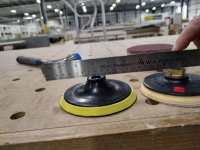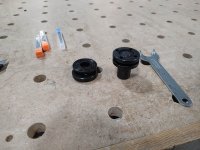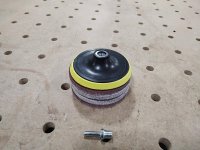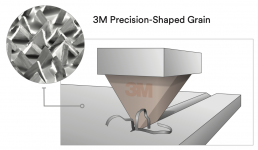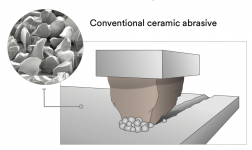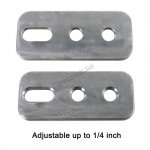Crazyraceguy
Member
- Joined
- Oct 16, 2015
- Messages
- 5,351
It looks like I have it worked out, in a couple of ways.
I got a 5" pad with direct 14mm threading. The height is almost exactly the same, within a mm or 2.
But, because of the diameter difference, it does rub. I'll just make a spacer to keep it from going so deep, easy. I didn't recall seeing it in the description of the pad, but it came with 50 pieces of 100 grit abrasive and the little 1/4" shank arbor/adaptor came with it too.
I also found a flange mounting arbor that is direct threaded, converting to 5/8-11. The two flanges and nuts, plus the pin-spanner, were separate. With this I will be able to use flap wheels, grinding wheels, or even cup wheels (wire)
$43 for all of it.
I got a 5" pad with direct 14mm threading. The height is almost exactly the same, within a mm or 2.
But, because of the diameter difference, it does rub. I'll just make a spacer to keep it from going so deep, easy. I didn't recall seeing it in the description of the pad, but it came with 50 pieces of 100 grit abrasive and the little 1/4" shank arbor/adaptor came with it too.
I also found a flange mounting arbor that is direct threaded, converting to 5/8-11. The two flanges and nuts, plus the pin-spanner, were separate. With this I will be able to use flap wheels, grinding wheels, or even cup wheels (wire)
$43 for all of it.

